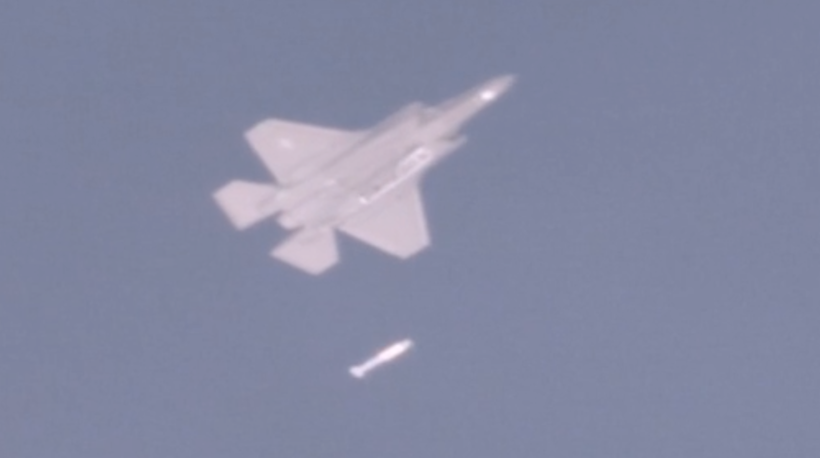The footage shows the recent F-35A Full Weapon System Demonstration (FWSD) with two B61-12 mock nuclear bombs.
As we have already reported in detail recently, the F-35 Joint Program Office has announced earlier this month that the F-35A successfully executed the first Full Weapon System Demonstration with the B61-12, considered the “graduation” flight test exercise for achieving nuclear design certification from an air-delivered platform.
The demonstration involved two F-35As assigned to Hill Air Force Base, Utah, flown by pilots from the 422nd Test and Evaluation Squadron, part of the 53rd Test and Evaluation Group that released two B61-12 Joint Test Assets at Tonopah Test Range: after taking off from Nellis AFB, Nevada, the two aircraft flew for 160 miles and conducted two separate drops of high-fidelity, non-nuclear mock B61-12 JTAs at Sandia National Laboratories’ Tonopah Test Range.
The test, “a major milestone towards achieving F-35A nuclear certification” that “remains on track to meet NATO’s January 2024 need date” was carried out on Sept. 21, 2021. While the Lightning II is not yet fully certified to conduct real world nuclear operations, the successful completion of this Full Weapon System Demonstration concludes on-aircraft testing for F-35A’s initial nuclear certification effort. The nuclear certification is broken into two phases: nuclear design certification and nuclear operational certification and this test concluded the first phase. Once fully certified, the F-35A will be the only DCA (Dual Capable Aircraft) to carry the nuclear weapon in the internal weapon bay: all the other tactical aircraft, including F-16, F-15E and Tornado, carry the nuke on the external pylons.
The latest test event was made public on Oct. 4 but the video of the actual release has been published on the DVIDS network only on Oct. 29, 2021: although it’s not the first time the video of a B61 dropped from an F-35A is released, the footage is interesting as it shows the opening of the internal weapon bay, the release of the bomb, and the immediate closure of the bay doors to achieve the Low Observability.
Then, you can also watch the two spin rocket motors firing during the descent, with the contrails forming a helical shape as the bomb starts to spin on its longitudinal axis: these are used to improve stability during the bomb’s descent and increase accuracy (with a reported 30 m Circular Error Probability – although accuracy is not a big issue when it deals with nuclear ordnance).
As we explained in our previous article: “the B61 entered service 50 years ago and has undergone a Life-Extention Program (LEP) to consolidate and replace four legacy bomb variants, the B61 -3, -4, -7, and -11 mods, into the B61-12. The refurbished B61-12 will allow the retirement of the larger B83, becoming the only remaining gravity delivered nuke in the inventory. The bomb will carry a low-yield nuclear warhead with four yield options, reportedly 0.3 kilotons, 1.5 kilotons, 10 kilotons and 50 kilotons, instead of larger warheads like the models it is replacing (which can reach 400 kilotons depending on the variants).”
“The 12-foot, 825-pound bomb is designed to be delivered from the air in either ballistic or guided-gravity drop modes, thanks to a new Boeing-built tail assembly that includes an Inertial Navigation System (INS) precision-guidance package and two spin rocket motors that improve the bomb’s stability on its longitudinal axis during the descent. The LEP is said to be increasing the B61’s accuracy so much (with a reported 30 m Circular Error Probability instead of the original 100 m) that it will have the same capability against hardened targets as the much more powerful weapons it is replacing.”
By the way, NATO has just carried out its annual nuclear deterrence exercise, “Steadfast Noon“, that this year took place in Southern Europe with DCA aircraft and non-nuclear capable aircraft that support the mission under the SNOWCAT (Support of Nuclear Operations With Conventional Air Tactics) program, deployed to Aviano AB and Ghedi AB, in Italy.








